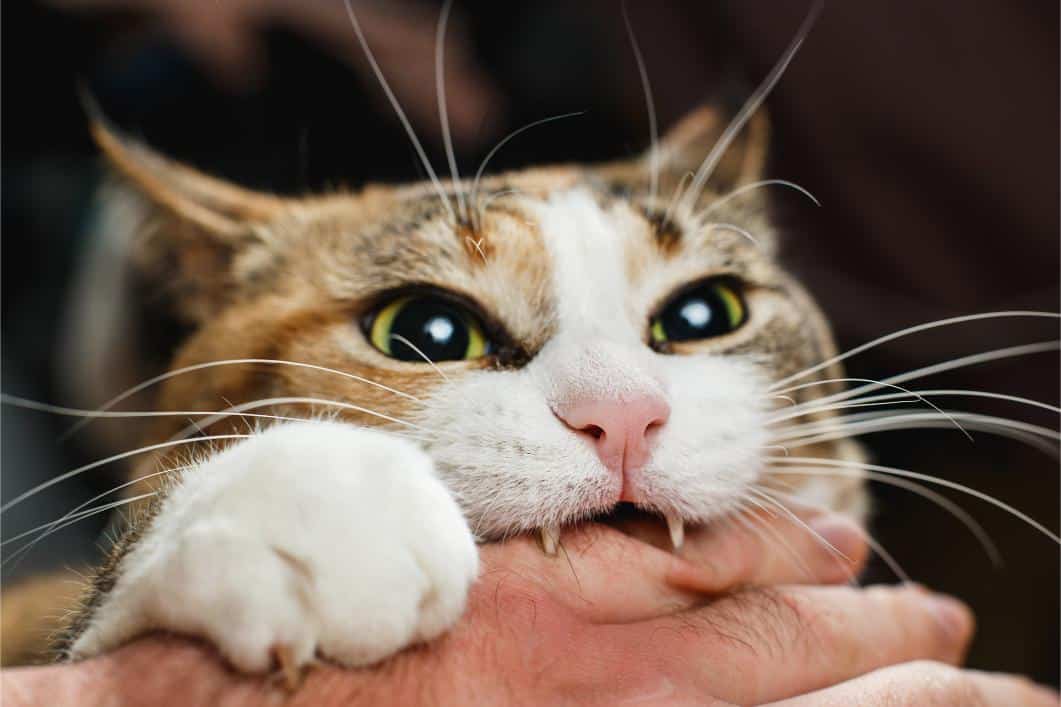Common Causes of Cat Aggression

Even the most affectionate cat can have moments of feisty behavior. At Sacramento Cat Hospital, we know how challenging it can be when your feline friend suddenly switches from purring to swatting. Understanding what’s causing your cat’s aggression—and how to manage it—can go a long way in creating a peaceful home for you both.
Why Does My Cat Act Aggressively?
Cat aggression can arise from various triggers. Pinpointing the reason behind it can be the first step to managing their behavior. Some of the most common causes of cat aggression include:
- Fear-based aggression: Cats may lash out if they feel threatened or frightened, especially when they’re cornered with no way to escape.
- Territorial aggression: Cats are naturally territorial. The presence of a new animal, person, or change in their space can spark defensive behaviors.
- Play aggression: Kittens and young cats, in particular, might exhibit rough play, which can look like aggression when they’re actually trying to engage with you.
- Petting-induced aggression: Some cats enjoy petting, but only to a point. Overstimulation can cause them to lash out unexpectedly.
- Pain-related aggression: When a cat is in pain, they may react aggressively, especially if you touch or handle them in a way that aggravates their discomfort.
If your cat shows signs of aggression, try to observe when and where it occurs, as these clues can help you understand what might be bothering them.
Managing Aggressive Cats: Tips and Tricks
Managing aggressive cats isn’t just about disciplining them; it’s about creating an environment where they feel safe and relaxed. Here are some practical strategies to help reduce cat aggression:
- Respect their boundaries: Cats often have clear preferences for when and where they want attention. If your cat shows signs of overstimulation—such as a flicking tail or dilated pupils—stop petting them to avoid triggering aggression.
- Provide plenty of playtime: Interactive play is a great way to burn off energy and channel any pent-up aggression. Use toys that let your cat pounce, chase, and stalk so they can express their natural hunting instincts without involving your ankles!
- Create safe spaces: Cats need a spot to retreat to when they feel overwhelmed. Whether it’s a cozy cat bed or a perch up high, giving them a safe zone helps reduce stress and aggression.
A calm environment and regular routines can help your cat feel more secure and minimize aggressive behavior.
Tips for Reducing Cat Aggression
When dealing with an aggressive cat, it’s important to have a strategy for those tense moments. Here are some ways to help reduce aggression and encourage calmer behavior:
- Use positive reinforcement: Reward calm behavior with treats and praise to help reinforce positive actions over aggressive ones. Cats don’t respond well to punishment, and trying to discipline them physically often makes aggression worse.
- Try pheromone diffusers: Products like Feliway® diffusers release calming pheromones that may help reduce tension in multi-cat households or environments with frequent changes.
These tactics can go a long way in managing your cat’s mood and helping them stay calm.
Cat Socialization Tips: Helping Cats Feel Comfortable
Socializing cats is different from socializing dogs, but it’s still essential for a well-adjusted pet. Here are some tips for helping your cat feel more comfortable around new people, pets, and environments:
- Introduce new experiences gradually: If you’re bringing a new pet or person into the home, let your cat explore at their own pace and avoid forcing them into interactions.
- Use treats as an incentive: Treats can help create positive associations, making new people or pets seem less intimidating.
- Allow for personal space: Cats enjoy socializing on their terms. Giving them space encourages them to approach and interact more willingly.
Socializing doesn’t mean forcing your cat into constant interactions but helping them feel safe and comfortable when encountering new situations.
Addressing Pain or Medical-Related Aggression
Sometimes, aggression stems from physical pain or discomfort. If your cat’s behavior has changed suddenly or they seem sensitive to touch, a medical checkup may be in order. Pain-related aggression is common in cats with arthritis, dental issues, or other health problems.
Have you got a grumpy cat on your hands? A wellness visit to a Sacramento Cat Hospital veterinarian can help identify any underlying issues, allowing us to provide treatments that will improve your cat’s comfort and reduce aggression.
Take the Next Step
Dealing with an aggressive cat can be frustrating, but understanding their behavior is key to fostering a happy, peaceful home. If your cat is showing signs of aggression, we can help. Our team provides compassionate care and expert advice. Contact us today to learn more about creating a calm, content space for you and your pet!
